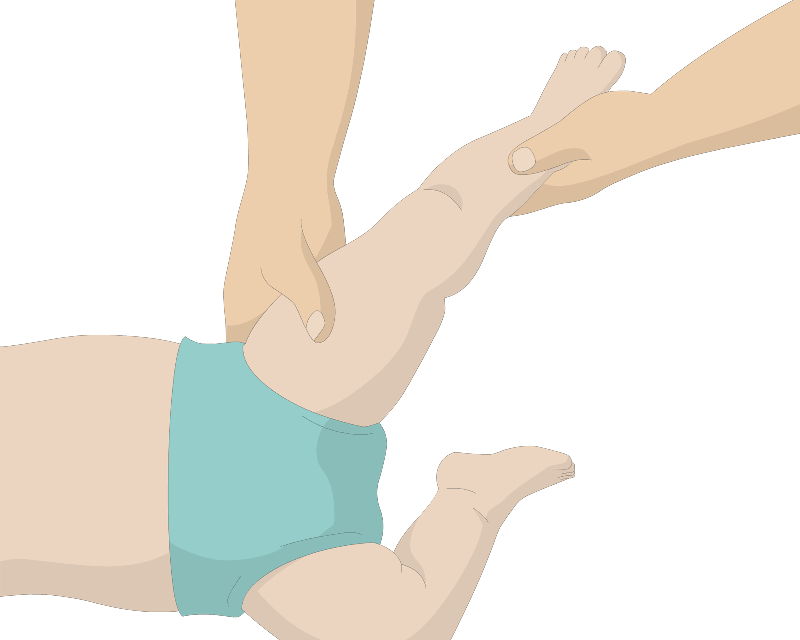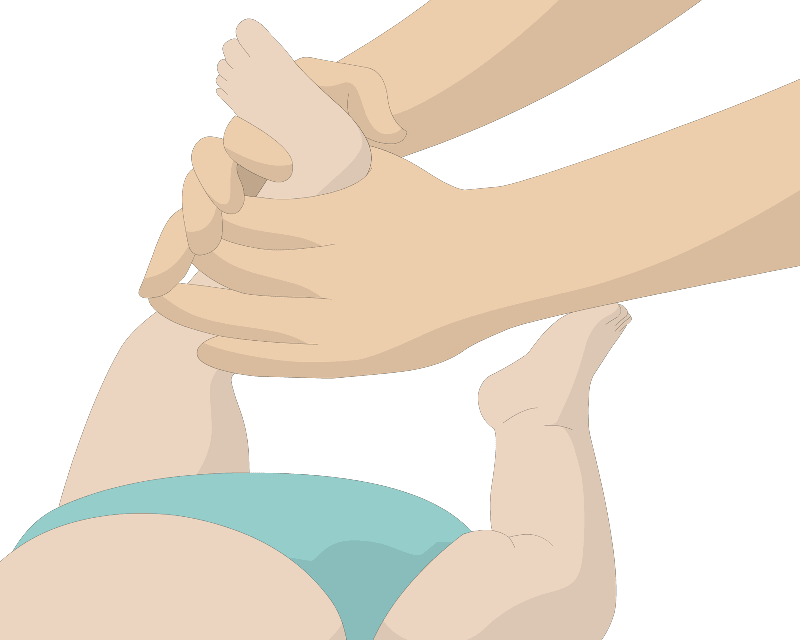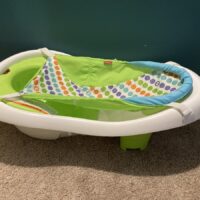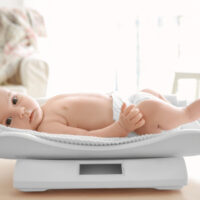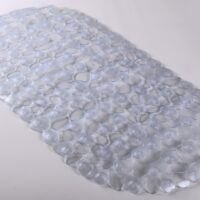It’s easy to think of baby massage as a “luxury”, or something that you just don’t have time for. But infant massage isn’t just for fun; it has been shown to have amazing benefits for your baby’s sleep.
The health, relationship and emotional benefits of baby massage are not just reserved for your baby. Parents also reap these benefits and baby massage helps form stronger bonds. It can be simple, as quick or as long as you like, and is immensely enjoyable.
Baby massage is a valuable skill, and something every parent should learn how to do. Use it as part of your daily routine with your little one and you’ll notice a wide range of positive effects.
Discover the benefits and learn how to massage safely and comfortably.
Chapters
Tips and tricks for a comfortable massage
The Benefits
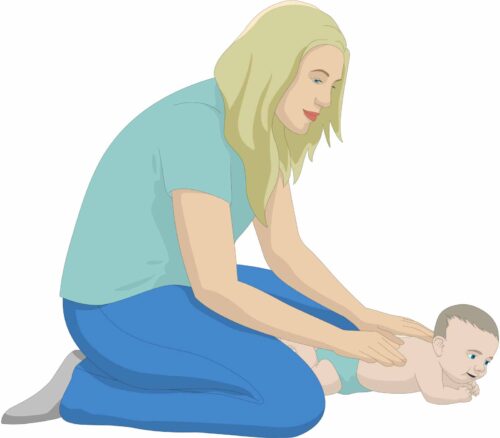
Massage feels incredibly good, but there are further-reaching benefits. Touch is a highly effective form of therapy for illness and injury. It can relieve pain, constipation and wind. It can help premature babies and newborns to gain weight and sleep for longer. Stress hormone levels are reduced and massage can soothe emotional distress. Infant massage is a way for mums and dads to bond, interact, and learn about their babies – it boosts confidence and trust in both directions. Best of all, it’s relaxing and enjoyable for everyone.
My research shows that baby massage can be very helpful for your baby’s sleep.
On average, a baby (0-24months old) that receives massage on a regular basis will have a night sleep that is 59 minutes longer than a baby that doesn’t get massages regularly.
The massaged baby will also fall asleep 4 minutes quicker.
The study comprised 747 babies between 0 and 24 months old. Most babies (88%) were between 0-6 months old.
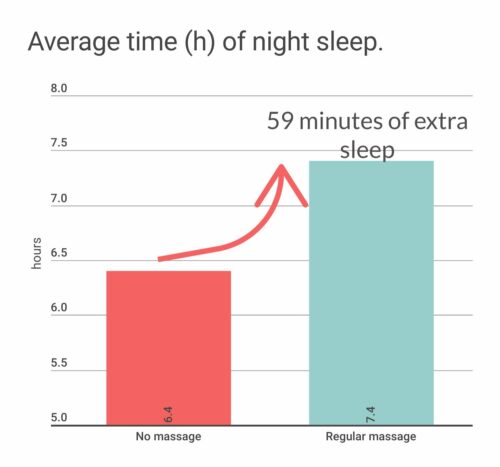
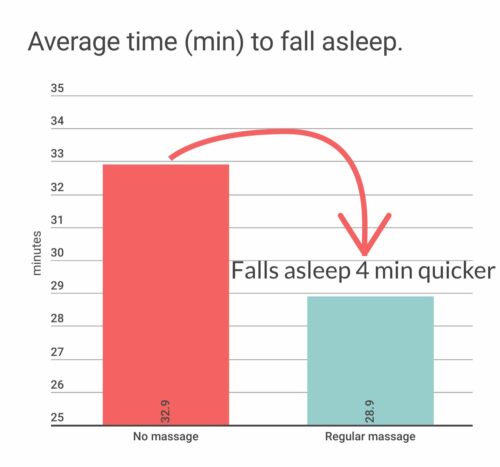
The Emotional Benefits
The benefits of touch are immense: physical contact has an enormous emotional effect on your baby’s life from day one. It’s well-known that babies who don’t receive adequate physical contact can become withdrawn socially and this can be a permanent effect.
Children who receive lots of physical contact, on the other hand, can not only grow faster, they thrive emotionally too.
When you massage your baby, you’re bonding with him. The more you massage your baby, the more you maintain eye contact with him, read his signals and learn all about him: where he enjoys being touched, what works, what doesn’t and how long the massage should last. The information you learn through massage is easily applied at other times, such as when your baby is unsettled or having trouble sleeping.
Babies delivered by Caesarian section haven’t experienced the physical stimulations of going through the birth canal into the outside world, and sometimes they don’t get the “kangaroo care” directly after being born that is so crucial to the bonding process. Massage can help to strengthen the bond between mother and child in these cases. Mothers with postnatal depression can experience difficulty interacting with their babies. Baby massage is a hugely helpful way for these mothers to give their babies the physical contact they need to thrive.
Fathers don’t get to experience the bond that comes with delivering a baby and breastfeeding. They do have the chance to show their love and affection on a regular basis in the form of baby massage. Dads who massage their babies regularly tend to get more eye contact, more smiles and improved non-verbal communication from their children, even at an early stage.
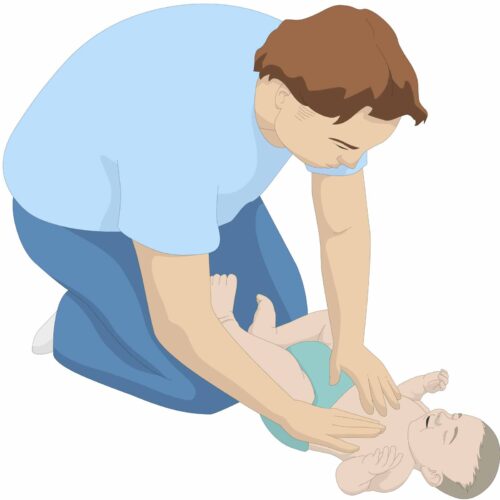
Many parents look forward to infant massage themselves because they reap the emotional benefits too: the power of touch therapy goes both ways, after all. Mums and dads can reduce their stress levels, deepen their breathing and relax too.
The Physical Benefits
Babies sometimes experience gas and constipation as the digestive system develop. In extreme cases, these digestive problems can lead to colic, causing your baby to scream and experience physical distress, sometimes for hours on end. Newborn massage is one of the simplest and most natural ways to alleviate her pain. Massage stimulates muscle contractions and increases circulation in the abdomen, both of which make digesting food easier and smoother for her.
Massage lowers stress levels, and this is not just helpful for your baby’s emotional state. It also increases immune function and lymphatic flow. This means that your baby isn’t just more resilient to infection, he can fight it off quicker if he does come down with something.
Spatial and sensory awareness are huge parts of growth and development, especially at this early stage. Physically massaging your baby will increase her awareness of her entire body and how it is connected. This supports the development of her gross motor skills.
Massage can increase and regulate the release of those wonderful sleep and mood hormones, melatonin and serotonin. Plenty of mums and dads report that with regular massage, their babies sleep deeper and for longer, and show signs of being more settled when they are awake.
Setting Up for Baby Massage
Your setup for baby massage doesn’t have to be complicated, but it will certainly help to create a soothing atmosphere. You should make sure that the temperature is comfortable, the lighting is calm and dim and that the oils are appropriate for a baby’s sensitive skin.
Setting Up the Room
Your baby won’t be wearing clothes, so make sure the room temperature is warm and pleasant – around 25 degrees Celsius. (If you’ve chosen the bedroom, make sure to cool the room back to a regular night-time temperature of 18-20 degrees Celsius before you put your baby to sleep).
Dim the lights and choose some soothing music or go for a comfortable silence. Choose a surface that feels safe: this might be on a bed, a changing table, a carpeted floor or simply on your lap. Lay your baby down on a soft mat or a fluffy towel and keep another one close at hand to wrap your baby in once you’re finished.
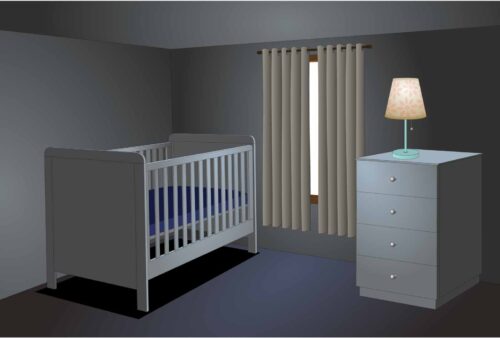
Choosing Oils for Baby Massage
Your baby is young and his skin is incredibly sensitive. For this reason, it’s better to use natural oils such as almond oil or jojoba. If you are concerned about an allergic reaction, avoid sesame oil or nut-based oils and opt instead for cold-pressed rapeseed, grapeseed, sunflower or olive oil. These unperfumed carrier oils are unlikely to cause a skin reaction.
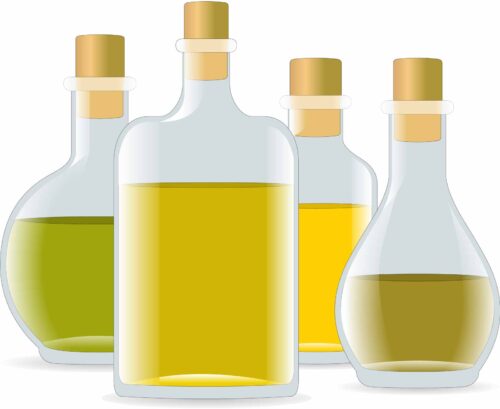
Should I Use Scented Aromatic Oils?
Aromatic or essential oils are derived from plants, flowers and herbs and are scented. The aromas often have healing qualities. Because aromatic oils are very concentrated, they are not suitable for a baby’s skin in their purest form. They are also not recommended for newborns. Instead, wait until your baby is at least three to six months old. If you want to apply the oil to your baby’s skin directly during the massage, dilute the essential oil with a base carrier oil to minimise the risk of a skin reaction or reaction. Use two drops of essential oil with three tablespoons of a carrier oil.
Instead of applying an essential oil directly to your baby’s skin, you could diffuse the air with an essential oil while you massage your baby. Add a few drops to around 600ml of steaming water or use a diffuser.
Lavender, dill and chamomile are three safe and soothing aromatic oils to use with babies from 3-6 months. Roman chamomile is said to be good for promoting sleep, and dill supposedly aids digestion. Lavender is claimed to be great for decongesting in the case of a cold and for soothing bites and burns.
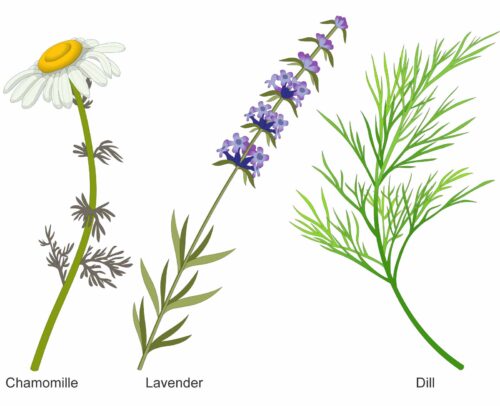
Being Relaxed Yourself
Timing is crucial: your baby will sense when you’re stressed. You will get much better results if you stay relaxed and focussed when giving your baby a massage. Turn off your mobile phone and any other distractions and dedicate the time to focussing on your baby and the sensations. Make sure you have plenty of time and move slowly, breathing deeply and slowly and talking to your baby as you go.
Safety Tips
Patch Test Your Massage Oil
Before introducing a new oil, you should do a patch test to make sure it won’t give your baby an allergic reaction. Dab a small amount of the oil you would like to use on the inside of your baby’s wrist. Most allergic reactions occur within 30 minutes, so wait a good half hour to see how your baby’s skin reacts. If there is no sign of a rash, feel free to use the oil you’ve chosen to massage your baby.
Before You Start
To make your baby’s massage as comfortable and safe as possible, firstly wash your hands and remove any jewellery that might hurt or scratch your baby, such as rings, watches and bracelets. File your nails if necessary, and be aware of your own posture, breathing and level of relaxation.
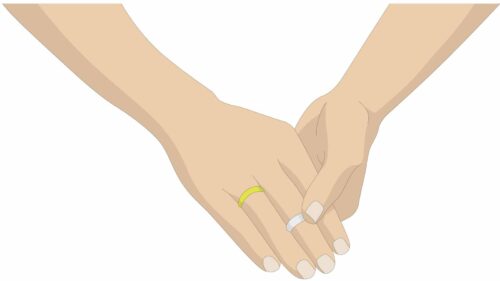
When to Massage your Baby
Massage can be a relaxing part of a bedtime routine or you can build it into your daily routine as a source of relaxation and bonding. You want the massage routine to be as positive and welcome as possible, so choose a time when your baby seems active and responsive. This could be before or after a daytime nap, just after changing her nappy, or before or after you give her a bath.
Massage for Newborn Babies
It’s safe to start baby massage with a healthy newborn baby. In the first few weeks, things are erratic: your baby might not know day from night and won’t yet have any sort of reliable routine for feeding or sleeping. At this early stage, “dry massage” is a great and very safe starting point. This means you massage your baby gently while he is clothed and without any oil. Even in the absence of massage, any sort of touch therapy is a wonderful beginning: lots of close body contact, holding, cradling rocking, stroking and plenty of cuddles and kisses.
Premature babies may have health problems that take priority over massage. Listen to the staff at the hospital to learn what sort of touch therapy will be possible. This could be just placing your hands on your baby while she lies in an incubator, or you may be able to lie your baby on your bare chest (kangaroo care). If it is possible to make any sort of physical contact with your baby at all, this will benefit their growth, development and weight gain enormously. But it depends on your premature baby’s gestational age when born, her size, health and development.
Massage for Older Babies and Toddlers
Baby massage can be introduced at any point in your child’s life, even if he hasn’t been exposed to massage before. While younger babies are much more sensitive to stimulation and require shorter amounts of it at one time, older babies and toddlers thrive on it! You can combine massage with rhymes, songs and games.
When Not to Massage Your Baby
There are times at which your baby won’t benefit from massage, either because she is stressed, overwhelmed, overstimulated, tired or not feeling well. Signs of overstimulation include avoiding eye contact, being fussy, an arching back or crying. If your baby has a fever or has recently been immunised, don’t attempt to massage him. Avoid massaging the skin around scratches, bumps or bruises. Finally, don’t attempt to massage your baby just after he has eaten a meal – instead, wait for around an hour.
As you begin, be aware of how your baby responds to your touch. If you sense she is not enjoying it or if she protests, you can always try later. In the beginning stages, she might not be able to stand more than a few minutes of massage, and this may increase as she gets used to the sensation.
Tips and Tricks for a Comfortable Massage
- When you’re just getting started with infant massage, or if you are massaging a newborn, it might not last longer than a couple of minutes. As you and your baby get used to the routine, you might dedicate five, ten or even fifteen minutes from of your daily routine to baby massage.
- To keep your baby toasty and warm, undress only the parts you are massaging. If you’re massaging your baby’s tummy, keep her nappy and pants on until you’re finished, and then put her top back on when you start massaging her feet and legs.
- Observe where your baby loves to be massaged and avoid certain parts of his body if he protests.
- Talk to your baby throughout the whole massage. Tell him which body parts you are massaging. Give him plenty of eye contact too.
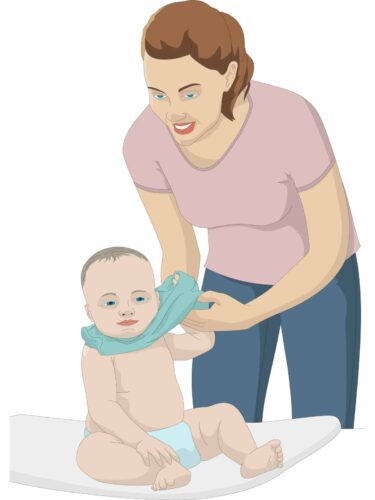
The massage routine
Below is the massage routine that I recommend. A massage session doesn’t always have to include all body parts. Do as much or as little that you and your baby feel like doing. Either do the whole routine or select and massage only the body parts that your baby likes to have massaged the most.
Ask for permission
The first thing you need to do before every massage is to make sure your baby would like to be massaged. A good way to do this is to lean over and ask your baby “would you like a massage” and at the same time warm your hands up close to your baby’s face.
This becomes a powerful cue and your baby will quickly learn to associate the sound and the sight of the hands rubbing with the massage.
Watch how your baby reacts to your question and observe your little one’s body language as well as facial expressions. An open and relaxed state usually indicate that your baby is happy to receive a massage. A closed up and tensed baby is perhaps not ready for a massage at the moment.
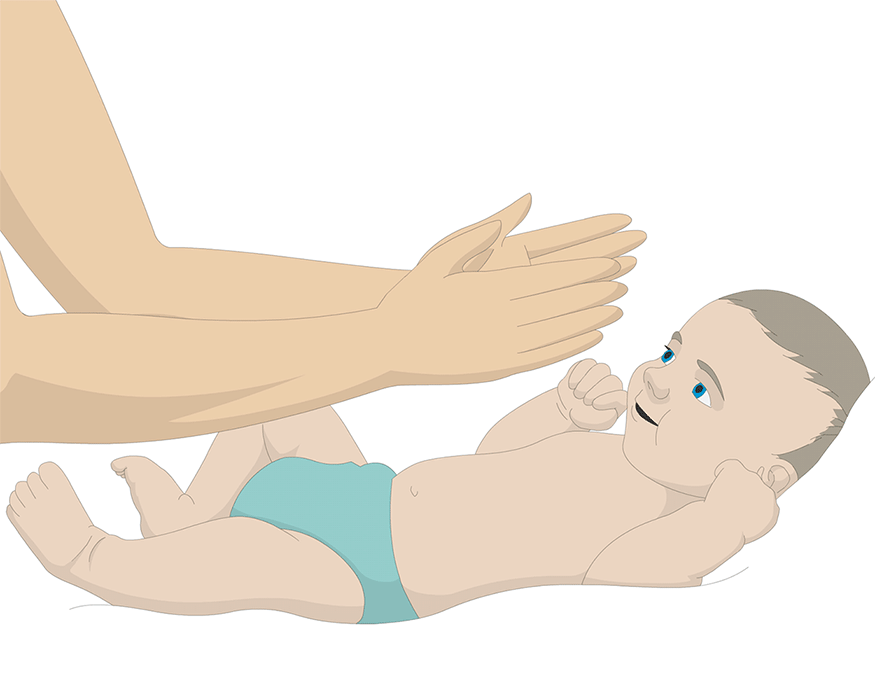 Legs
Legs
I recommend that you start your massage session with the legs as it helps to relax your baby.
Undress only the legs so that your baby stays warm.
Supporting the leg at the ankle with one hand, slide your other hand slowly down the leg from the hip to the ankle. Give each leg about three strokes.
Feet and Toes
After both legs have been massaged move on to the feet. Support her foot between your thumb and index finger (in a C-Shape). Start by kneading the top of your baby’s foot and then use your thumbs to stroke from the heel to the toes. Pay attention to your baby’s reactions and move on if your baby is too ticklish and tries to withdraw the foot.
Hips
Do a cycling motion with both legs. Hold on to the lower legs and gently move one knee towards the tummy whilst gently stretching out the other leg. You can repeat this for as many times your baby like, but around 5 whole cycles is a good target.

Your baby’s hips and knees are now warmed up. Clap the feet together a few times with the knees bending outwards.
Then with your right-hand gently hold both ankles and lift the legs above the belly button. Use your left hand to massage your baby’s right buttock. Do this for about 30 seconds and then gently shake your baby’s legs out again. Repeatthe step but this time massage the left buttock.
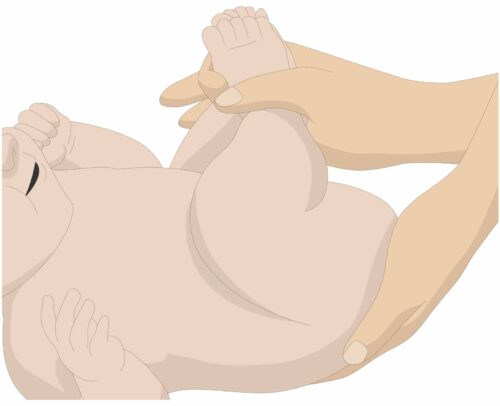
You can finish with one or two bicycles again.
Arms
With your baby lying on her back in front of you, take one arm and gently massage down the arm towards the hand. Do this gently with your right hand followed by your left hand like in the diagram. Tell your baby what you are doing and make eye contact. You can do this for about 20 seconds but remember if she is uncomfortable then you should stop.
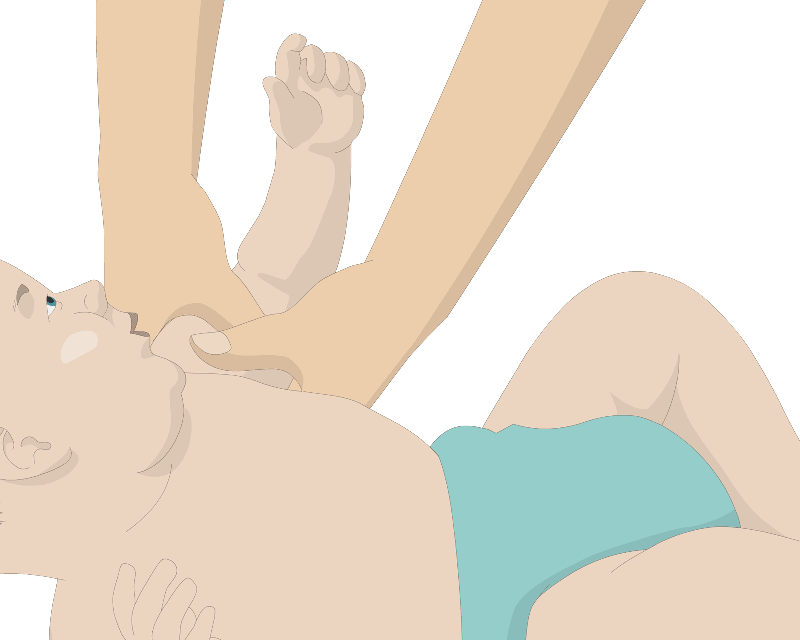
Fingers
Start by opening your baby’s hand and massaging it between your hands. Massage the palm of her hand with your thumb. Whilst doing this use your index finger to massage the back of her hand. You can do this for 10 – 20 seconds. Then spread her fingers and thumb and, one by one, gently pull each of them trough your thumb and index finger.
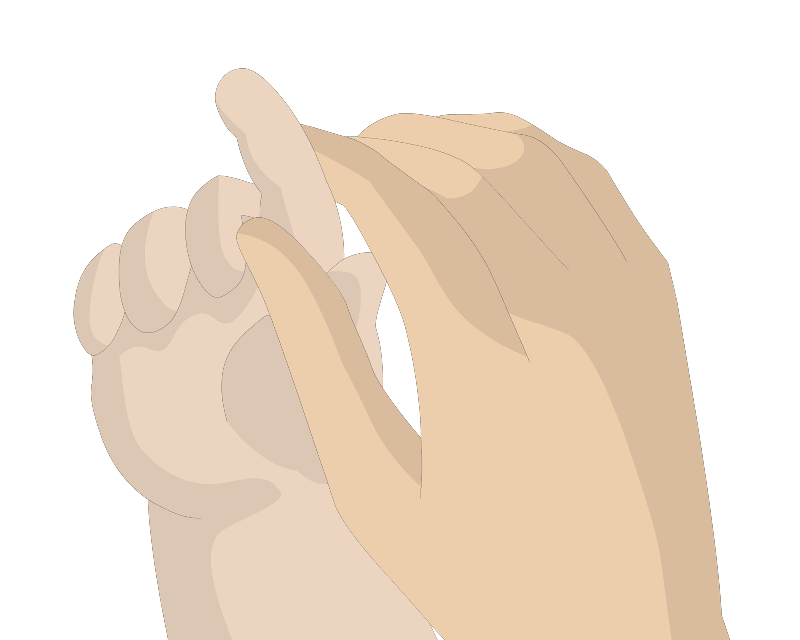
Chest
Place your warm oiled hands in the centre of her chest then gently massage down each side of her ribs towards her tummy then back again to the centre of her chest. Think of a heart shape! Repeat 4-5 times. Don’t forget to tell her what you are doing and give her kisses on her tummy after.

Tummy
With a gentle hand massage her tummy from your left to your right in a circular clockwise motion. Try to move your hand and your baby’s tummy together as if you are kneading dough but remember this is a gentle massage so no need to push hard. Repeat 4 or 5 times.
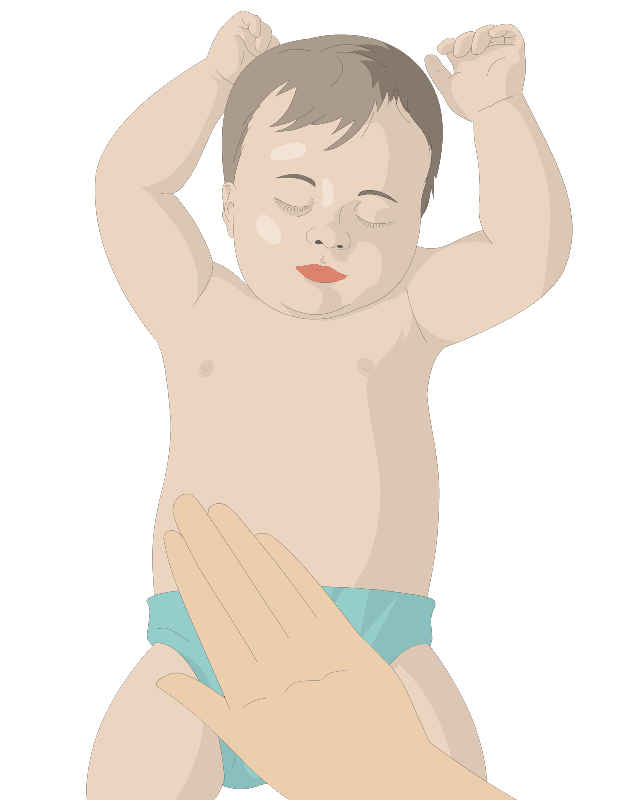
Head
Cup your baby’s face holding your thumbs at the sides of her nose and gently massage outwards over her cheeks towards her ears. Repeat 4-5 times.

Then massage her temples very gently with your fingers followed by a light massage of the top of her head in circular motions with the flat of your hand.

Back
Lie your baby on her tummy or alternatively over your knee. Make sure that her head is supported. If she is unable to support her head then it is better to wait with this step. Place your hands on her shoulders then gently massage down her spine towards her bottom then massage back up to the shoulders. The movement should be slow but continuous from one side to the other.

What worked for you?
Did massage help your baby’s colic? Do you swear by grape seed oil and prefer Mozart? Does your baby go wild for a toe-tickle and a foot massage just before bed? We’d love to know what worked for you and your family. Leave a comment below and tell us your best-kept tips and tricks for baby massage.

